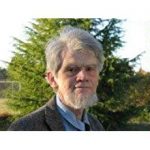 Back in 2005, Irena M. Conboy and colleagues published a paper in Nature detailing a heterochronic parabiosis experiment, that investigated aging in mice. They were investigating whether the blood coursing through the arteries and veins of old animals differed from the blood that kept young animals alive. To perform the experiment, they surgically connected the circulatory system of an old mouse to that of a young one. This caused the blood sustaining the old mouse to be 50% old and 50% young.
Back in 2005, Irena M. Conboy and colleagues published a paper in Nature detailing a heterochronic parabiosis experiment, that investigated aging in mice. They were investigating whether the blood coursing through the arteries and veins of old animals differed from the blood that kept young animals alive. To perform the experiment, they surgically connected the circulatory system of an old mouse to that of a young one. This caused the blood sustaining the old mouse to be 50% old and 50% young.
Correspondingly the blood nourishing the young mouse was also 50% old and 50% young. The researchers then ran a series of tests to see if the surgery had any effect on the animals’ health.
It did.
The health measures of the old animal shifted toward a more youthful profile, and the health measures of the young animal did the opposite, becoming more like those of an old animal. The older animal became more robust and the younger animal became frailer.
I don’t know about you, but for me this brought to mind centuries-old vampires staying alive by drinking the blood of young people. Could there actually be some truth to the old vampire legends?
But it does say that some constituents of blood have something to do with aging. Exactly what blood has to do with aging is a little harder to tease out. It takes follow-ups to the original heterochronic parabiosis experiments.
There are two main possibilities for what is going on:
- There are healthy factors in young blood that are required for robust good health, which diminish over the course of an animal or person’s lifespan. As these factors diminish, aging occurs.
- There are unhealthy factors that are not present in young blood, that accumulate over the course of an animal or person’s lifespan, causing at least some of the decline in health that we call aging.
It’s also possible that both these mechanisms may play a role. To move forward in improving health, it is important to discover which of these mechanisms is operating, and whether an intervention is possible that would slow, halt, or reverse the aging process in humans as well as in mice. In a recent paper in Aging, Conboy and her colleagues have addressed this question.
Therapeutic parabiosis does tell us something about aging, but, is not a therapy that I would enjoy.
- Hooking two circulatory systems together is a delicate operation and requires partners that are nearly identical, genetically.
- The mice do not enjoy being restrained by the arrangement.
- You could never ethically do this with people.
The Conboy team decided to try an easier procedure, called neutral blood exchange (NBE). This consists of replacing the platelet rich plasma (PRP) component of blood with a saline solution, supplemented with 5% purified commercial albumin. Albumin is a blood component that neither increases nor decreases as an animal (or human) ages. Through a series of exchanges, 50% of the test animals’ PRP was replaced with saline supplemented with albumin, using NBE. This was performed on both old and young experimental animals, and a similar procedure was performed on both old and young control animals, who just received their own PRP back again. Albumin levels were essentially unchanged in all cases. Six days later, assays were performed on all the test subjects and controls.
Results for old mice treated with NBE:
- Liver health was much improved
- Muscle repair was improved
- Fibrosis was attenuated
- Attenuation of myogenic proliferation was switched to enhancement
- Hippocampal neurogenesis was increased
All good!
In addition, diluting the blood of young mice with NBE did not diminish their liver health.
Ex-vivo tests performed on blood samples taken from four old human individuals corroborated the results obtained with the mouse experiments.
It appears that diluting the putative age-elevating factors that exist in the blood of old individuals has the effect of reverting the cells of a variety of tissues to a younger state. Considering all the conflicting theories bearing on the question of why we age, this research opens a whole new area of inquiry and may show us the way, or at least one of the ways, forward.
BIO:
Allen G. Taylor is a 40-year veteran of the computer industry and the author of over 40 books, including Develop Microsoft HoloLens Apps Now, Get Fit with Apple Watch, Cruise for Free, SQL For Dummies, 9th Edition, Crystal Reports 2008 For Dummies, Database Development For Dummies, Access Power Programming with VBA, and SQL All-In-One For Dummies, Third Edition. He lectures internationally on astronomy, databases, innovation, and entrepreneurship. He also teaches database development and Crystal Reports through a leading online education provider. For the latest news on Allen’s activities, check out his blog at wwwallengtaylor.com or contact him at allen.taylor@ieee.org.
